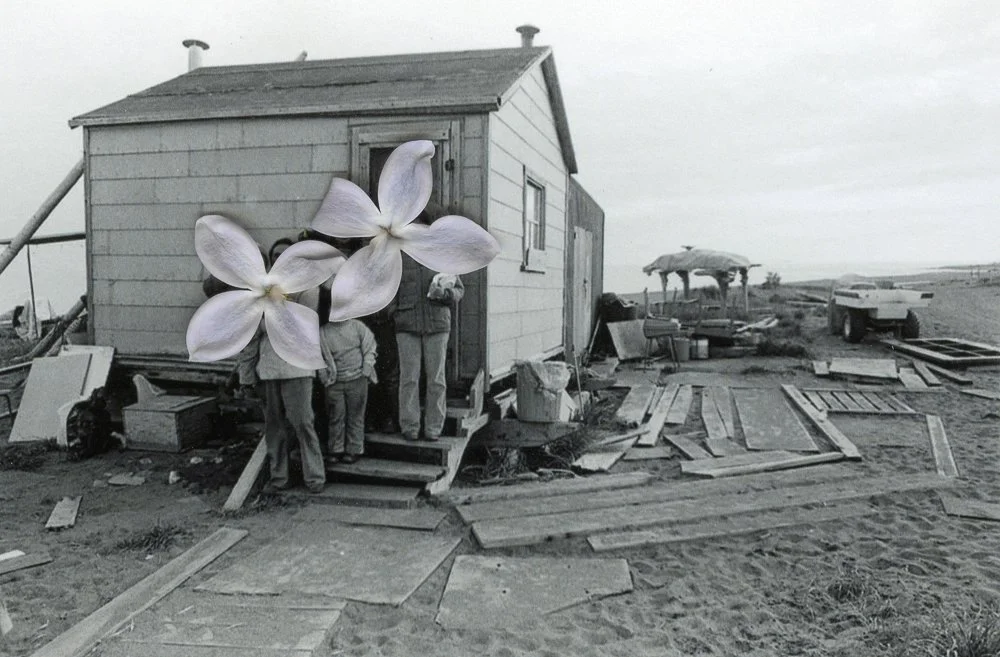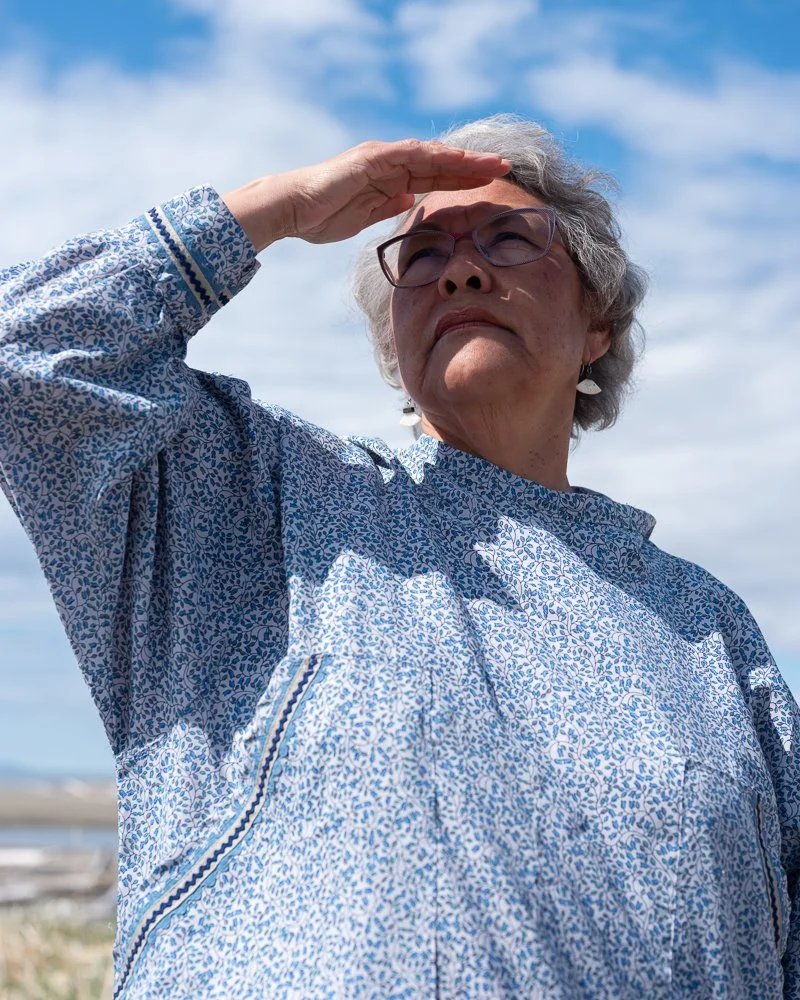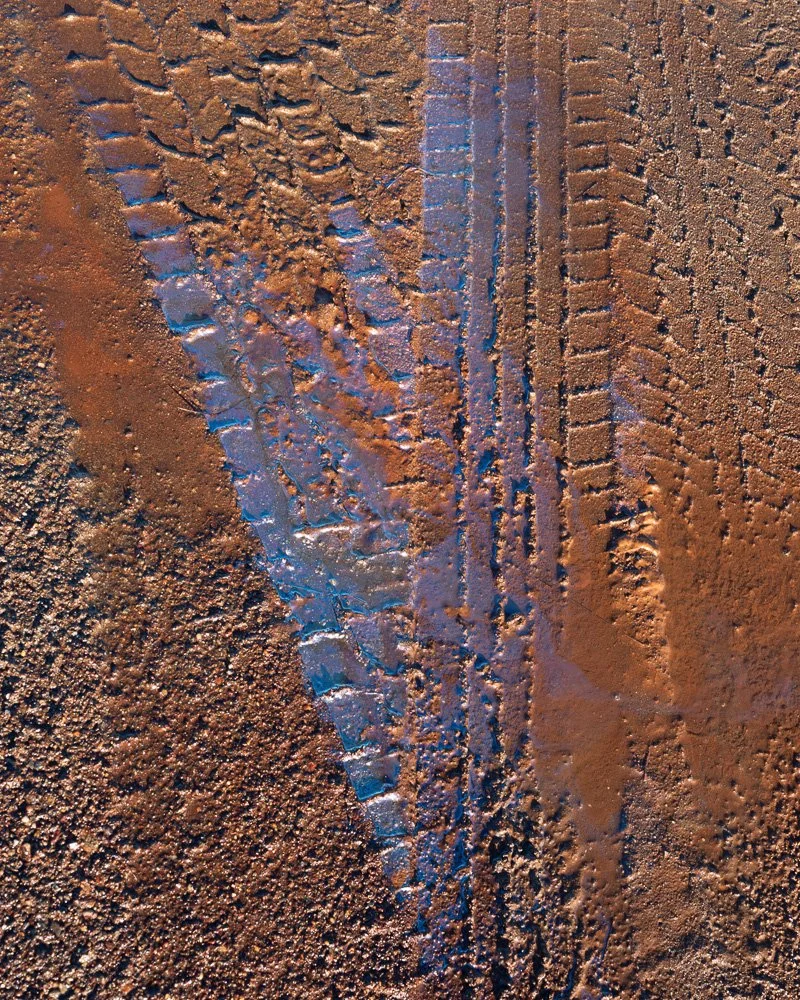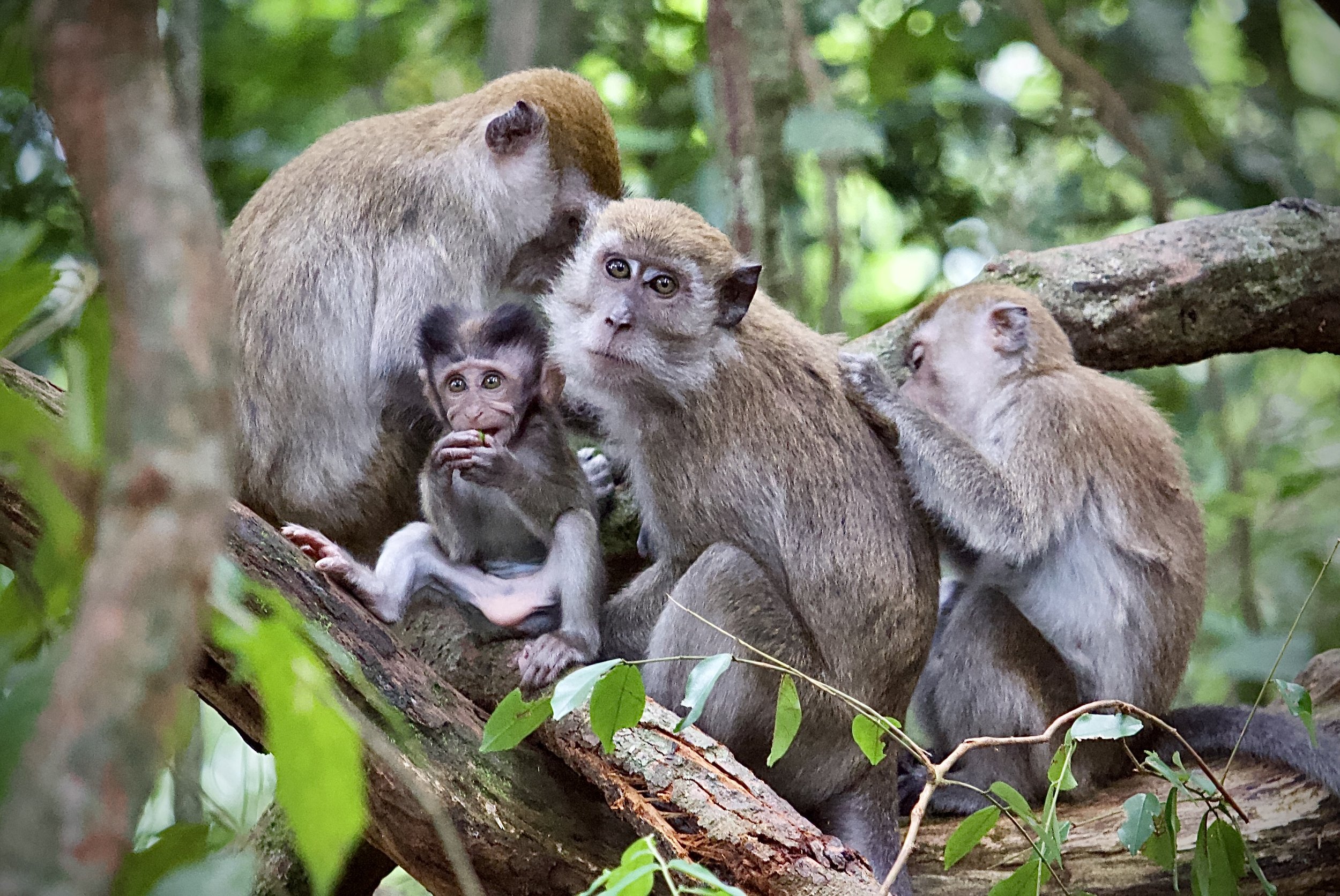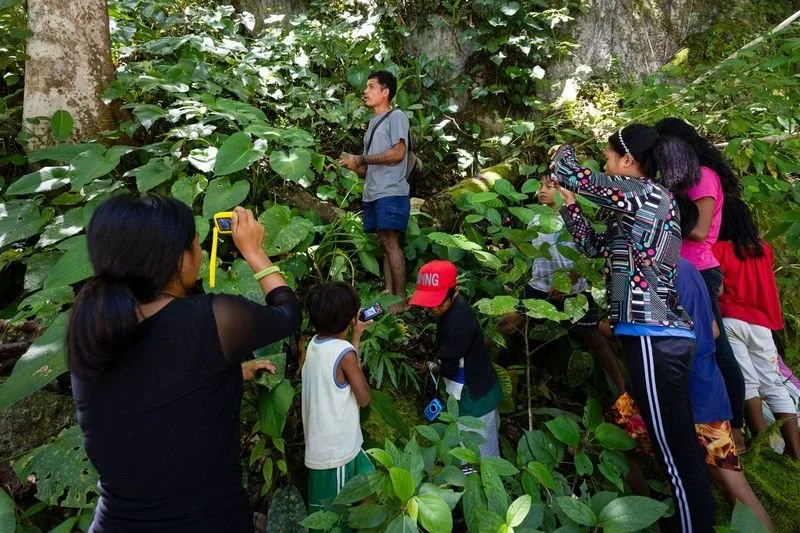How do we tell stories of place when that place is gone (After Typhoon Merbok) 2 of 2.
WORDS & IMAGES BY JENNY IRENE
Josie at Uinñaataavik.
Surrounded by the Bering Sea and the Nome River is a small spit of land that holds stories of people and place. During the summer months, you can hear the ocean waves, Arctic Terns, seagulls and on those quiet days when the salmon are running, you can hear the splash of fish. Throughout the years this area has been loved by the people who call this spot fish camp and it has been shaped by the waters and storms that remind us of their power. Fort Davis or “Fort” or as some call it in Inupaiq, Uinñaataavik, is a place my family and other Inupiat families have cherished.
Uinñaataavik is located about three miles from my hometown of Nome, Alaska also known as Sitŋasuaq in the Inupiaq language. Uinñaataavik is where my late great-grandparents set up their modest one-room subsistence camp after moving from their home village of Kiŋigin, or Wales, Alaska in the early 1950s. Not only was this place rooted in community, it was where our Inupiaq ways of being were passed down from one generation to the next. It is where my great-grandparents set their fish nets; where our family processed traditional foods such as seal, walrus, and salmon with other families who also created their fish camps here; it is where children played together, where familial bonds were formed. I grew up going to our camp — our family’s aged and weathered fish camp, which was the last physical structure that connected me to my late great-grandparents.
In September 2022, Typhoon Merbok ripped through the coastline of Northwest Alaska and transformed Uinñaataavik, sweeping away our aging fish camp. The composition of the Native allotment land once held dear by my family was eroded and forever changed.
Not long after the storm, I drove down the bumpy dirt road to Uinñaataavik with a family friend named Josie. Josie’s maternal family roots are from Kiŋigin and she was also my third grade teacher. I was in shock as to what I saw — this was not the Fort Davis I once knew. As we drove slowly down that road, Josie pointed out other family camps that were lost to the ocean or severely destroyed, remembering each family name and sharing a few memories of her time growing up at Fort. Josie’s truck came to a stop. We were at the new end of the road, decided by the waves and wind. We got out and were met by her sister, Mary, as we began to look for where our camps used to be.
As I looked to the ocean side of Uinñaataavik, approximately the place where my family’s fish camp used to be, I saw nothing but driftwood. There was no more beach grass. No pale grey camp. On that sand, together, we searched. Our camps were gone and much of the land eroded. What was once plentiful land was now beach.
Due to the intense storms and loss of land, my family cannot rebuild at this location.
Since then, I have been asking myself, how do we tell a story of place when that place is gone? How do we as Indigenous peoples share story so that future generations will know the significance of place? Indigenous peoples understand place as a part of us. When climate change impacts and even erases those places we know as part of us, where do we go from there? With this work, I tell a portion of the story of Uinñaataavik.
Uinñaataavik will always remain part of my family’s story.
This story is shared in loving memory of Jenny Irene, who left this Earth too soon. This work was made through our Revolutionary Storyteller Program.



